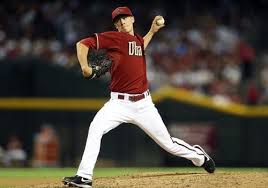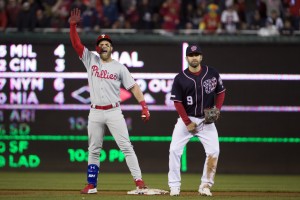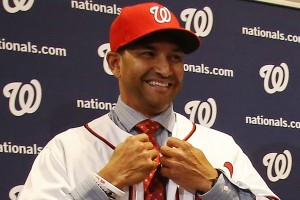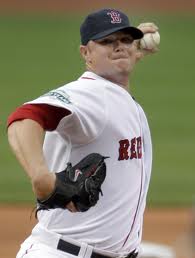Yeah, the team just won 3 of 4 from Miami. They’re still almost guaranteed at this point not to make the playoffs. As suggested in the comments from the previous post … Here’s a sweep through the 40-man roster as of today, to talk about possible trade chips and who may or may not be in the future of this team.
https://docs.google.com/spreadsheets/d/1vnTLwaXYeHFjahCNrTFLzAVebGw0Fj_-__igrTplZA0/edit#gid=1393584019
Outright Free Agents after 2019:
- Anthony Rendon: who would also be the most likely to fetch prospects in trade mid-season, but who also is someone the Nats may very much want to sign to an extension. Will the ownership group learn their lesson after dragging their feet last year with Bryce Harper, costing them the Houston trade that almost certainly would have brought back better stuff than a post 4th round pick (#139 overall, which is what we got instead thanks to criminal cap mismanagement over the past two years). Is this leadership group going to keep him instead of trading him because they think trading him for half a season will damage their negotiations with him? Trust me, Rendon WANTS to be traded; it removes the Qualifying Offer from burdening his off-season negotiations. Frankly, getting moved to a contender shouldn’t preclude his returning to the Nats on a long term contract, but a bigger question is what is he worth? Unlike other major 3B players who signed mega deals lately (Nolan Arenado, Manny Machado), Rendon will be 30 upon signing, has injury history, and thus his value is limited. This is a tangent conversation to the subject at hand, but factors in.
- Brian Dozier; so far, he’s not only not earning his 2019 $9M salary, he’s putting his career in serious jeopardy. If he is still hitting .210 at the end of the year, its hard to see him getting a guaranteed contract next year at age 33.
- Howie Kendrick, who it should be noted was expected to be basically a 4th OF/utility guy and has been batting frigging cleanup for the team lately. He continues to be a professional hitter even at advancing age (he’s in his age 35 season), and should be worthy of some halfway decent return in prospects in trade.
- Jeremy Hellickson: for as good as he was in 2018, he’s been as bad in 2019. He’s not going to fetch anything in trade, and is closer to a release than a trade.
- Javy Guerrero: we’ll see if he even makes it to July 1. Fungible asset, trade if you can get anything.
- Gerardo Parra: we’re paying him a pro-rated MLB min … as with Guerrero, trade if you can get anything for him.
If you waive the white flag on 2019, every one of these players should get moved for whatever you can get, if anything. Rendon and Kendrick bring the most back at this point.
Players with 2020 Options
- Ryan Zimmerman: boy, is he putting the team into a tough position. Instead of producing in his possible walk year, he’s been awful at the plate and has gotten hurt with a typical “old guy” injury (Planter Fasciitis). Yes he’s the Face of the Franchise, yes he’s the longest tenured player, yes he was the first player the team ever drafted, yes he’s the clubhouse leader, yes he means a ton to the community, yes he holds a massive fundraiser each year, yes he’s set down DC roots, yes he’s got a 5 year personal-services contract with the team (since deemed illegal in the CBA), and yes he wants to be with the team post playing career. Yes to all of that. However, there’s no way he’s worth his 2020 option of $18M. that’s 10% of the payroll for a guy who is easily replaced with readily available mid-30s sluggers for a quarter of the price. This is going to be ugly. I don’t think you trade him (who would want him and who would give up prospects?), but I also don’t think you sign him at his option. I privately suspect the team will renegotiate his $18M option to something like a 4-yr/$20M deal that pays him right around what Matt Adams is making, takes him to his late 30s, establishes him as a utility/bench bat for the duration, and keeps him in the fold til that point in his career where inarguably he is done playing.
- Adam Eaton: his 2020 and 2021 options are ridiculously affordable ($9.5M and $10.5M). The team gutted its top-end starting pitcher depth to acquire him (a decision that looks worse and worse as Lucas Giolito throws 4-hit shutouts and Reynaldo Lopez maintains 12 K/9 rates and Dane Dunning remains a viable future MLB starter even despite his TJ surgery). But Eaton is now 30, and his 5-6 bWAR seasons seem past him. If he’s a 1-2 win player, he’s worth the salary and picking up the options. If he ends 2019 hitting a punchless .273 …. do you dare cut him or trade him? Maybe not after 2019, but another season of this after 2020 and they may be cutting bait.
- Yan Gomes: $9M 2020 option. While the team didn’t trade as much for Gomes, catchers are difficult to come by in this sport. So even despite his current BA, I can’t see the team cutting him loose after this year and declining his option.
- Sean Doolittle has a ridiculously cheap $6.5M 2020 option and is the first stable closer we’ve had under longer term team control since Drew Storen. He’s not going anywhere.
- Trevor Rosenthal: $10M option on the table which increases to $15M player option if he pitches in 50 games (he’s appeared in 7 so far). You may laugh right now at even considering this option; what if he comes back and pitches lights out in June and July? I think you trade him for whatever you can get and let his options be someone else’s issue. More likely, he’s going to come back from his “rehab” appearances, continue to struggle and the team will summarily cut him, and he’s exhibit 1A for the 2019 team’s issues.
- Matt Adams: $4M 2020 mutual option; he’s not earning it right now. Trade him for what you can get, and find some other middle 30s lefty slugger on the open market next year.
- Tony Sipp: $2.5M 2020 option, that’s a steal. But he’s got a 5.40 ERA in limited action; would you pick up this option?
Of this group, i’d move Rosenthal, Adams and Sipp if you can get anything.
Signed for 2020/longer term:
- Max Scherzer; signed through 2021, and honestly if he wins another Cy Young he’ll be wearing a Nats cap in Cooperstown. can’t move him.
- Stephen Strasburg: signed through 2023, can’t move him.
- Patrick Corbin; just signed new deal through 2024, why would we want to move him.
- Anibal Sanchez: $9M for 2020 guaranteed … but he’s not really putting himself into position to get anything back in trade based on performance and injury so far.
- Kurt Suzuki: $6M for 2020, and he’s playing great. If you move him you just have to replace him and what has changed in terms of our ML catcher depth from last off-season to now? We still don’t trust Spencer Kieboom with major league ABs, i’m not sure why Raudy Read continues to take up space on the 40-man, and our best prospect Israel Pineda is in Low-A. So we need Suzuki for 2020.
I’d keep the big 3 starters and Suzuki; move Sanchez if you can (doubtful). I just don’t see how you can justify moving any of our big 3 starters unless you’re planning a complete, 59 win season overhaul.
Arbitration eligible next year:
- Trea Turner
- Michael Taylor
- Kyle Barraclough
- Justin Miller
- Wilmer Difo
- Matt Grace
- Koda Glover
- Joe Ross
An interesting set of players. I’d say the team faces some interesting tender choices next off-season. Right now looking at this list i’d clearly tender Turner, Barraclough and Ross, I’d probably take a hard look at Miller, Difo, Grace but eventually tender, and I’d probably cut loose Taylor and Glover. Who of these guys are trade bait? Honestly, everyone but Turner, Ross and Barraclough.
In terms of Trade deadline … i’m not sure i’d trade any of these guys … they’re all either untouchable or un-tradeable.
Pre-Arbitration players:
- Juan Soto, Wander Suero, Andrew Stevenson, Victor Robles, Jake Noll, James Bourque, Erick Fedde, Spencer Kieboom, Kyle McGowin, Tanner Rainey, Raudy Read, Adrian Sanchez, Austin Voth, Austen Williams, Carter Kieboom.
No reason to part ways with anyone here; if they’re starters (Soto, Robles, Fedde, etc) they’re too valuable on their current $575k (or so) contracts, and if they’re role players they’re fungible assets who are probably not really trade-able.
—————–
Summary: there’s not really a ton of return value here. Rendon, Kendrick, Adams seem to be the best trade chips.
—————–
added bonus: CBS sports did some similar analysis of Nats potential trade chips: https://www.cbssports.com/mlb/news/mlb-trade-deadline-anthony-rendon-and-other-nationals-trade-chips-ranked-if-they-become-sellers-by-july-31/ . They came up with similar names here.








